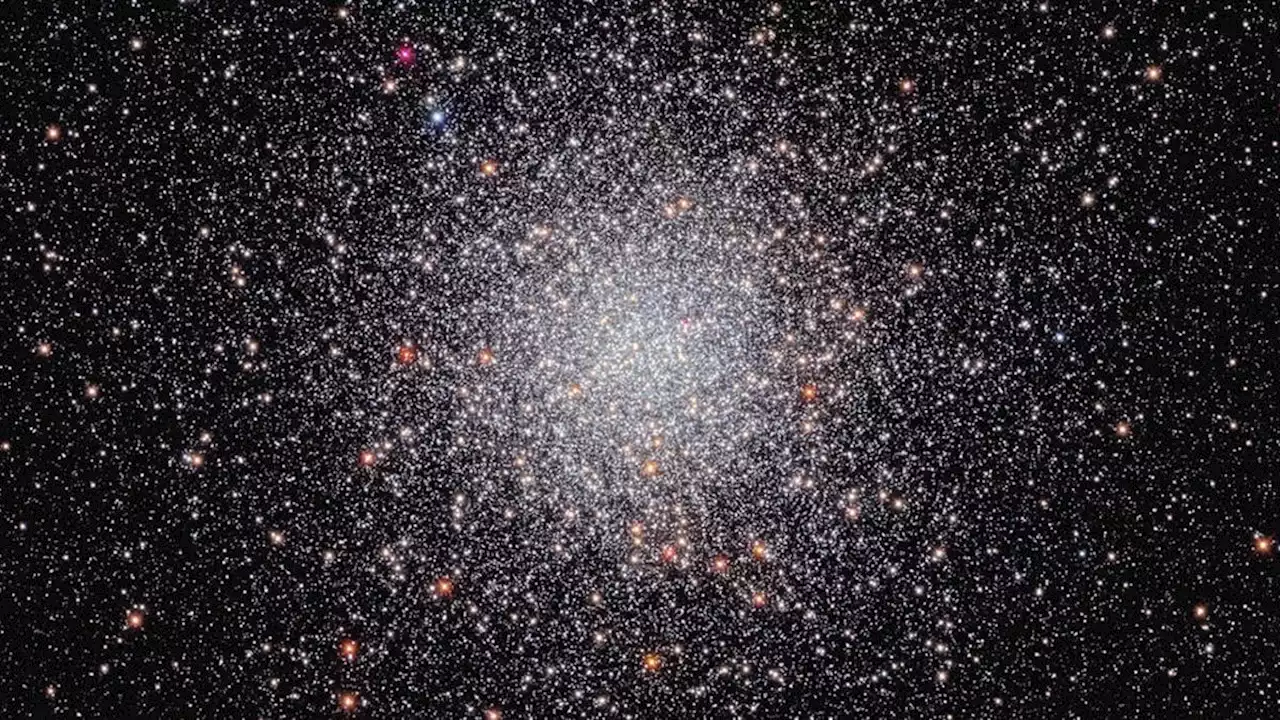The Hubble Space Telescope recently captured the 'glittering swarm' of stars of the globular cluster NGC 6440, located some 28,000 light-years away in Sagittarius.
The cluster is located in the constellation Sagittarius, some 28,000 light-years away.
Globular clusters like NGC 6440 are tightly-packed collections of stars that live on the edges of galaxies. They can hold anywhere from hundreds of thousands to millions of stars that average about one light-year apart. However, they can be as close together as the size of our solar system. Looking like a glittering swarm of buzzing bees, the stars of globular cluster NGC 6440 shine brightly in this NASA Hubble Space Telescope image. The cluster is located some 28,000 light-years away in the constellation Sagittarius, the Archer.
Ireland Latest News, Ireland Headlines
Similar News:You can also read news stories similar to this one that we have collected from other news sources.
 Hubble telescope spies a swarm of stars in a cosmic beehiveLocated 28,000 light-years from Earth, the globular cluster NGC 6440 is a densely packed conglomeration of stars hiding rapidly spinning pulsars.
Hubble telescope spies a swarm of stars in a cosmic beehiveLocated 28,000 light-years from Earth, the globular cluster NGC 6440 is a densely packed conglomeration of stars hiding rapidly spinning pulsars.
Read more »
 James Webb Space Telescope Unveils Exquisite Views of Distant GalaxiesFor decades, the Hubble Space Telescope and ground-based telescopes have provided us with spectacular images of galaxies. This all changed when the James Webb Space Telescope (JWST) launched in December 2021 and successfully completed commissioning during the first half of 2022. For astronomers, the
James Webb Space Telescope Unveils Exquisite Views of Distant GalaxiesFor decades, the Hubble Space Telescope and ground-based telescopes have provided us with spectacular images of galaxies. This all changed when the James Webb Space Telescope (JWST) launched in December 2021 and successfully completed commissioning during the first half of 2022. For astronomers, the
Read more »
 How the James Webb Space Telescope changed astronomy in its first yearCloser looks at everything from Mars to distant galaxies.
How the James Webb Space Telescope changed astronomy in its first yearCloser looks at everything from Mars to distant galaxies.
Read more »
 Webb Space Telescope Reveals “Stirred Up” Secrets of Breathtaking Planetary NebulaResearchers reconstructed the scene, finding up to three unseen stellar companions that may have shaped the planetary nebula’s layers of gas and dust. Wait, how many stars were at this party? It’s likely there were up to five – but only two appear now! A research team recently began digging into We
Webb Space Telescope Reveals “Stirred Up” Secrets of Breathtaking Planetary NebulaResearchers reconstructed the scene, finding up to three unseen stellar companions that may have shaped the planetary nebula’s layers of gas and dust. Wait, how many stars were at this party? It’s likely there were up to five – but only two appear now! A research team recently began digging into We
Read more »
 James Webb Space Telescope captures chaotic cosmic collisionWebb caught sight of a galactic get-together known as II ZW 96.
James Webb Space Telescope captures chaotic cosmic collisionWebb caught sight of a galactic get-together known as II ZW 96.
Read more »
